
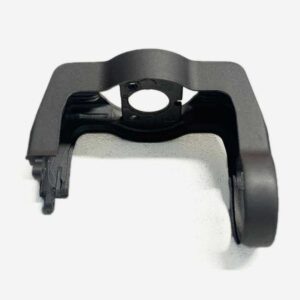
DJI Air 2S Roll Arm
₹4,799.00 Original price was: ₹4,799.00.₹3,879.00Current price is: ₹3,879.00. incl. Gst
- Product Name: DJI Air 2S Roll Arm
- Compatible With: DJI Air 2S Drone
- Primary Function: Replacement part for the gimbal’s roll axis
- Build Quality: OEM-grade, designed to match original specifications
- Condition: Brand new and unused
- Material Type: High-precision lightweight alloy (assumed standard DJI quality)
- Installation: Requires technical skill or professional assistance
- Use Case: Gimbal repair or restoration of roll-axis stabilization
Need Help? Chat with an Expert
- 9891098328
Free Shipping & Returns
Assured Quality
Online Support 24/7
Secure Payment
- Description
- Specification
- Reviews (0)
Description
DJI Air 2S Roll Arm – The Tiny Hero Behind Smooth Cinematic Moves
When your DJI Air 2S starts shaking like it’s doing a bhangra mid-air, the issue might just be the roll arm. It’s not the flashiest part, but it’s the one that quietly keeps your gimbal stable and your footage buttery smooth. The DJI Air 2S Roll Arm ensures that your camera stays balanced on its side-to-side axis, allowing for fluid motion, stable shots, and zero camera tantrums. Whether your drone took a tumble or the roll axis is just acting up, this replacement part is here to save the day (and your footage). Think of it as a chiropractor for your gimbal—it realigns everything and brings back the flow.
Key Features Of the DJI Air 2S Roll Arm
1. Precisely Engineered for DJI Air 2S
This roll arm isn’t some cheap one-size-fits-all part you get in a mystery repair kit. It is precision-machined to match the exact dimensions, design, and structural needs of the DJI Air 2S gimbal. That means you’re getting a roll arm that fits like a glove—no bending, no guesswork, and definitely no duct tape needed. It snaps into place with the same level of perfection that DJI themselves intended, which means you’re restoring your drone to factory-grade functionality, not just making it flyable.
2. Restores Smooth Gimbal Movement
A gimbal is like a skilled cameraman—it needs to be smooth, steady, and reliable. But when the roll arm is damaged or worn out, that smoothness disappears, and your drone starts recording footage that looks like it was filmed during an earthquake. Replacing the roll arm fixes the roll axis movement, giving your gimbal back its fluidity and restoring that silky cinematic motion DJI is known for. No more shaky videos, no more awkward pans—just clean, professional-grade movement that makes your drone footage look like it belongs on the big screen.
3. Lightweight But Durable
Despite being strong enough to handle constant movement and micro-adjustments, this roll arm is feather-light—because drones aren’t built to carry dead weight. Made from aircraft-grade alloy, it combines minimal weight with maximum durability, allowing your drone to maintain its flight performance while ensuring the gimbal doesn’t buckle under pressure. Whether you’re flying in calm skies or breezy hilltops, this roll arm will stay stable, strong, and silent—no rattles, no jitters, just smooth operation.
4. Ready for Easy Installation
You don’t need to be an aerospace engineer to install this roll arm. With basic drone repair tools and a little patience, even a hobbyist can manage the swap. It’s designed for relatively easy replacement, especially for users who’ve tinkered with gimbal components before. Just follow a YouTube tutorial or a step-by-step guide, and you’ll have it installed before your chai goes cold. Still worried? It’s also technician-friendly, meaning if you prefer the professionals to handle it, any good drone repair shop will know exactly what to do with it.
5. OEM-Grade Quality You Can Trust
When it comes to gimbal parts, you don’t want to take chances. Using third-party components can mess up your gimbal alignment, void your warranty, or worse—make your footage unusable. This roll arm is OEM-grade, meaning it meets or exceeds DJI’s original manufacturing standards. You’re not just getting a “close-enough” replacement; you’re getting a part that behaves exactly like the original one that came with your drone. That means better reliability, better longevity, and zero surprises mid-flight.
How to Use
-
Open your DJI Air 2S carefully using the appropriate precision tools. Remove the gimbal cover and protect sensitive parts from static or damage.
-
Locate and remove the damaged roll arm by unscrewing it gently and disconnecting any flex cables or connectors attached to it.
-
Install the new roll arm in the exact same position. Align it correctly, secure the screws, and reattach any flex cables with patience and care.
-
Run a gimbal calibration using the DJI Fly app once the drone is reassembled. This step is crucial to ensure proper functionality and smooth motion.
-
Test the drone by powering it on and checking for gimbal errors. Do a trial flight and observe the gimbal roll performance before serious flying.
How to Clean
-
Use a clean, soft brush to gently dust off the roll arm without scratching the metal surface or disturbing nearby gimbal components.
-
If grime is present, lightly dab a microfiber cloth in 90% isopropyl alcohol and gently wipe the arm. Never use water or household cleaners.
-
Avoid direct spraying of any liquid. Always apply cleaner to the cloth—not the component—to prevent any accidental internal damage.
-
Wipe down the arm after every outdoor flight, especially in dusty or humid conditions. This prevents buildup that can affect performance.
-
Be gentle with the joints, and never use pointed or sharp objects to clean around the motor area or gimbal connectors. Always keep it subtle and safe.
How to Take Care
-
Avoid rough landings or sudden takeoffs, as they can stress or bend the roll arm and affect its smooth rotation and balancing ability.
-
Do a pre-flight check before every use to see if the roll arm is properly aligned and not wobbling or clicking during movement.
-
Keep your drone stored safely in a shockproof, padded case when not in use. This protects sensitive parts like the roll arm from unintended pressure.
-
Don’t touch or move the gimbal manually when powered off, as this can misalign internal components or damage the arm over time.
-
Update your firmware regularly, especially after part replacement, to ensure the software can properly calibrate the new component.
Dos & Don’ts
Do’s:
-
Always buy original or OEM-quality parts when replacing gimbal components like the roll arm. Quality matters for smooth performance.
-
Use proper tools like anti-static tweezers and a magnetic screwdriver to avoid damaging delicate connectors or screws during installation.
-
Calibrate the gimbal every time you replace or adjust its parts. This helps the drone’s brain understand what’s new and how to handle it.
-
Keep your roll arm clean and dust-free, especially if you frequently fly in open fields, sandy areas, or urban spaces.
-
Start with slow test flights after the replacement to ensure the gimbal functions perfectly before flying in complex environments.
Don’ts:
-
Never fly with a damaged or loose roll arm, as this can cause camera vibration, motor overload, and even crash-related failures.
-
Avoid using generic third-party replacements, which might not match the required dimensions or material strength.
-
Don’t skip the calibration step after replacement. Even a perfectly installed arm can cause issues if the software isn’t reconfigured.
-
Never try to force or bend the roll arm during or after installation. It’s engineered to move precisely—any pressure can ruin the alignment.
-
Don’t ignore small gimbal jerks or camera shifts, as they may be signs of roll arm misalignment or early damage.
Safety Tips
-
Disconnect the battery before beginning any disassembly or repair to prevent electrical shorts or accidental motor activation.
-
Use an anti-static surface and wristband while handling the gimbal components to avoid static discharge damaging internal electronics.
-
Label each screw or connector you remove during disassembly to avoid confusion during reassembly. It saves a lot of headaches.
-
Manually rotate the gimbal slowly after installing the new arm to check for smoothness before applying power—no resistance should be felt.
-
If in doubt, consult a technician. While this repair is DIY-friendly for experienced users, professional help ensures flawless restoration.
Final Words
The DJI Air 2S Roll Arm might be small in size, but it plays a huge role in your drone’s performance. A damaged roll arm can turn epic drone footage into jittery messes, but this high-quality replacement brings back the balance—literally. With perfect fitment, strong build, and smooth motion recovery, it’s the part you need when your gimbal starts acting funny. So don’t wait for more wobbly shots—give your drone the love it deserves and restore that buttery-smooth roll with the DJI Air 2S Roll Arm today!
Specifications Of DJI Air 2S Roll Arm
| Specification | Details |
|---|---|
| Product Name | DJI Air 2S Roll Arm |
| Compatibility | DJI Air 2S Drone |
| Axis Type | Roll Axis |
| Function | Gimbal Stabilization Arm |
| Condition | Brand New |
| Material | Lightweight Alloy |
| Color | Silver |
| Weight | Approx. 10g |
| Installation Required | Yes |
| Suitable For | Gimbal Repair/Replacement |
| OEM Part | Yes |
| Warranty | No Warranty (Spare Part) |
| Availability | Out of Stock |
| Price | ₹3,200 |
| Country of Origin | China |
| Package Includes | 1 x Roll Arm Only |
| Compatible Camera System | DJI Air 2S Gimbal Unit |
Be the first to review “DJI Air 2S Roll Arm” Cancel reply
Overview
DJI Air 2S Roll Arm – The Tiny Hero Behind Smooth Cinematic Moves
When your DJI Air 2S starts shaking like it’s doing a bhangra mid-air, the issue might just be the roll arm. It’s not the flashiest part, but it’s the one that quietly keeps your gimbal stable and your footage buttery smooth. The DJI Air 2S Roll Arm ensures that your camera stays balanced on its side-to-side axis, allowing for fluid motion, stable shots, and zero camera tantrums. Whether your drone took a tumble or the roll axis is just acting up, this replacement part is here to save the day (and your footage). Think of it as a chiropractor for your gimbal—it realigns everything and brings back the flow.
Key Features Of the DJI Air 2S Roll Arm
1. Precisely Engineered for DJI Air 2S
This roll arm isn’t some cheap one-size-fits-all part you get in a mystery repair kit. It is precision-machined to match the exact dimensions, design, and structural needs of the DJI Air 2S gimbal. That means you’re getting a roll arm that fits like a glove—no bending, no guesswork, and definitely no duct tape needed. It snaps into place with the same level of perfection that DJI themselves intended, which means you’re restoring your drone to factory-grade functionality, not just making it flyable.
2. Restores Smooth Gimbal Movement
A gimbal is like a skilled cameraman—it needs to be smooth, steady, and reliable. But when the roll arm is damaged or worn out, that smoothness disappears, and your drone starts recording footage that looks like it was filmed during an earthquake. Replacing the roll arm fixes the roll axis movement, giving your gimbal back its fluidity and restoring that silky cinematic motion DJI is known for. No more shaky videos, no more awkward pans—just clean, professional-grade movement that makes your drone footage look like it belongs on the big screen.
3. Lightweight But Durable
Despite being strong enough to handle constant movement and micro-adjustments, this roll arm is feather-light—because drones aren’t built to carry dead weight. Made from aircraft-grade alloy, it combines minimal weight with maximum durability, allowing your drone to maintain its flight performance while ensuring the gimbal doesn’t buckle under pressure. Whether you’re flying in calm skies or breezy hilltops, this roll arm will stay stable, strong, and silent—no rattles, no jitters, just smooth operation.
4. Ready for Easy Installation
You don’t need to be an aerospace engineer to install this roll arm. With basic drone repair tools and a little patience, even a hobbyist can manage the swap. It’s designed for relatively easy replacement, especially for users who’ve tinkered with gimbal components before. Just follow a YouTube tutorial or a step-by-step guide, and you’ll have it installed before your chai goes cold. Still worried? It’s also technician-friendly, meaning if you prefer the professionals to handle it, any good drone repair shop will know exactly what to do with it.
5. OEM-Grade Quality You Can Trust
When it comes to gimbal parts, you don’t want to take chances. Using third-party components can mess up your gimbal alignment, void your warranty, or worse—make your footage unusable. This roll arm is OEM-grade, meaning it meets or exceeds DJI’s original manufacturing standards. You’re not just getting a “close-enough” replacement; you’re getting a part that behaves exactly like the original one that came with your drone. That means better reliability, better longevity, and zero surprises mid-flight.
How to Use
-
Open your DJI Air 2S carefully using the appropriate precision tools. Remove the gimbal cover and protect sensitive parts from static or damage.
-
Locate and remove the damaged roll arm by unscrewing it gently and disconnecting any flex cables or connectors attached to it.
-
Install the new roll arm in the exact same position. Align it correctly, secure the screws, and reattach any flex cables with patience and care.
-
Run a gimbal calibration using the DJI Fly app once the drone is reassembled. This step is crucial to ensure proper functionality and smooth motion.
-
Test the drone by powering it on and checking for gimbal errors. Do a trial flight and observe the gimbal roll performance before serious flying.
How to Clean
-
Use a clean, soft brush to gently dust off the roll arm without scratching the metal surface or disturbing nearby gimbal components.
-
If grime is present, lightly dab a microfiber cloth in 90% isopropyl alcohol and gently wipe the arm. Never use water or household cleaners.
-
Avoid direct spraying of any liquid. Always apply cleaner to the cloth—not the component—to prevent any accidental internal damage.
-
Wipe down the arm after every outdoor flight, especially in dusty or humid conditions. This prevents buildup that can affect performance.
-
Be gentle with the joints, and never use pointed or sharp objects to clean around the motor area or gimbal connectors. Always keep it subtle and safe.
How to Take Care
-
Avoid rough landings or sudden takeoffs, as they can stress or bend the roll arm and affect its smooth rotation and balancing ability.
-
Do a pre-flight check before every use to see if the roll arm is properly aligned and not wobbling or clicking during movement.
-
Keep your drone stored safely in a shockproof, padded case when not in use. This protects sensitive parts like the roll arm from unintended pressure.
-
Don’t touch or move the gimbal manually when powered off, as this can misalign internal components or damage the arm over time.
-
Update your firmware regularly, especially after part replacement, to ensure the software can properly calibrate the new component.
Dos & Don’ts
Do’s:
-
Always buy original or OEM-quality parts when replacing gimbal components like the roll arm. Quality matters for smooth performance.
-
Use proper tools like anti-static tweezers and a magnetic screwdriver to avoid damaging delicate connectors or screws during installation.
-
Calibrate the gimbal every time you replace or adjust its parts. This helps the drone’s brain understand what’s new and how to handle it.
-
Keep your roll arm clean and dust-free, especially if you frequently fly in open fields, sandy areas, or urban spaces.
-
Start with slow test flights after the replacement to ensure the gimbal functions perfectly before flying in complex environments.
Don’ts:
-
Never fly with a damaged or loose roll arm, as this can cause camera vibration, motor overload, and even crash-related failures.
-
Avoid using generic third-party replacements, which might not match the required dimensions or material strength.
-
Don’t skip the calibration step after replacement. Even a perfectly installed arm can cause issues if the software isn’t reconfigured.
-
Never try to force or bend the roll arm during or after installation. It’s engineered to move precisely—any pressure can ruin the alignment.
-
Don’t ignore small gimbal jerks or camera shifts, as they may be signs of roll arm misalignment or early damage.
Safety Tips
-
Disconnect the battery before beginning any disassembly or repair to prevent electrical shorts or accidental motor activation.
-
Use an anti-static surface and wristband while handling the gimbal components to avoid static discharge damaging internal electronics.
-
Label each screw or connector you remove during disassembly to avoid confusion during reassembly. It saves a lot of headaches.
-
Manually rotate the gimbal slowly after installing the new arm to check for smoothness before applying power—no resistance should be felt.
-
If in doubt, consult a technician. While this repair is DIY-friendly for experienced users, professional help ensures flawless restoration.
Final Words
The DJI Air 2S Roll Arm might be small in size, but it plays a huge role in your drone’s performance. A damaged roll arm can turn epic drone footage into jittery messes, but this high-quality replacement brings back the balance—literally. With perfect fitment, strong build, and smooth motion recovery, it’s the part you need when your gimbal starts acting funny. So don’t wait for more wobbly shots—give your drone the love it deserves and restore that buttery-smooth roll with the DJI Air 2S Roll Arm today!






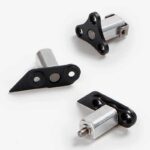
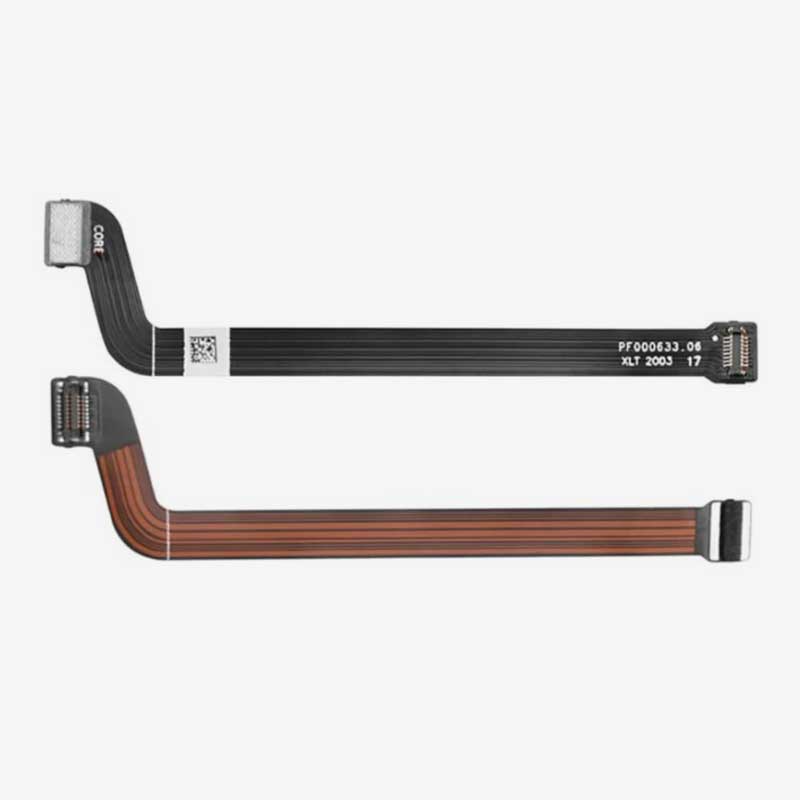
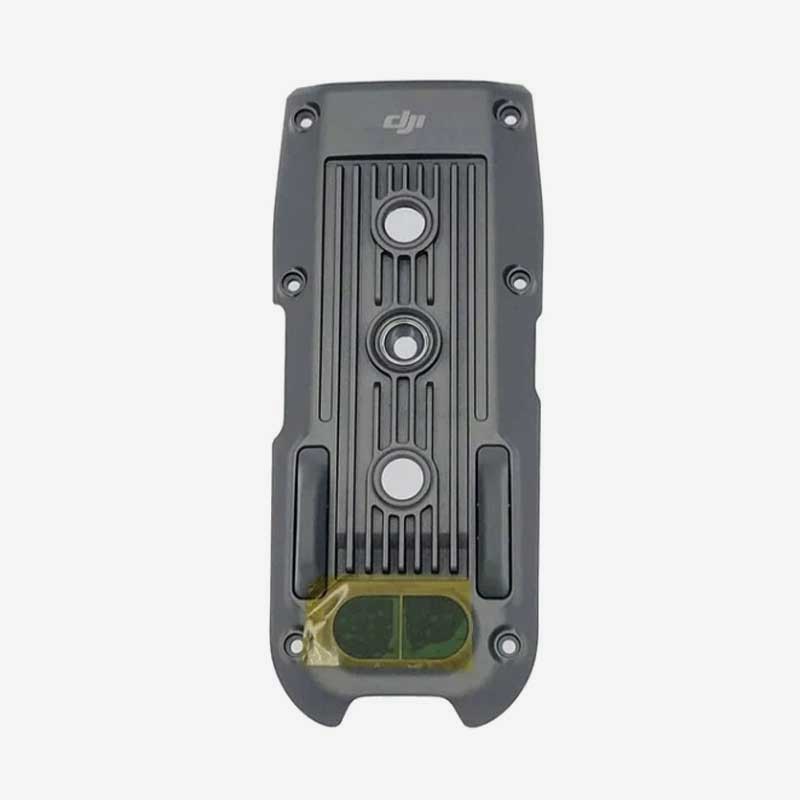
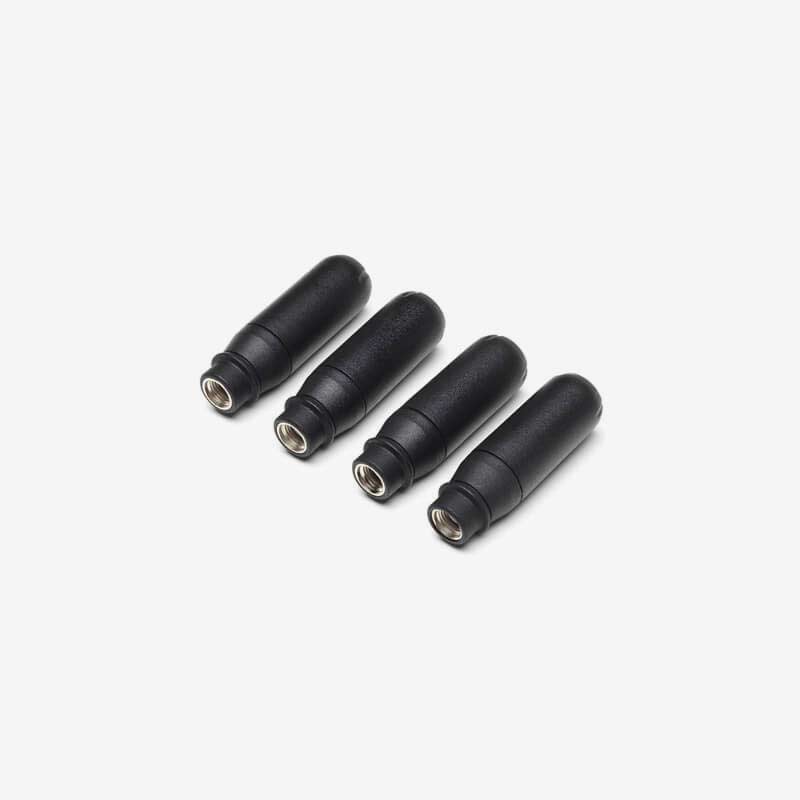
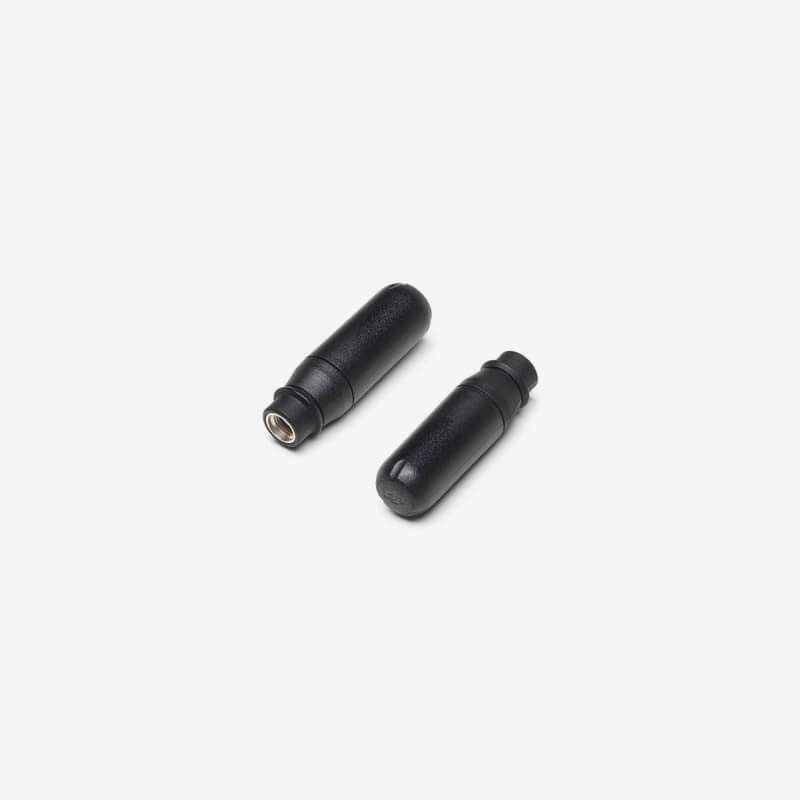


Reviews
There are no reviews yet.